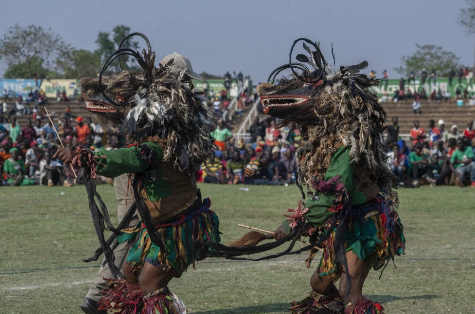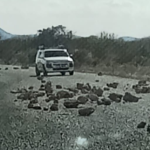In the worst drought southern Africa has faced in a century, villagers in Malawi are resorting to digging for potentially poisonous wild yams as their crops lie scorched in the fields.
“Our situation is very dire; we are starving,” said 76-year-old grandmother Manesi Levison, who was tending to a pot of bitter, orange wild yams. She explained that these yams must be cooked for eight hours to remove their toxins. “Sometimes the kids go for two days without any food,” she added.
Levison, who cares for 30 grandchildren, has ten of them huddled under the thatched roof of her home in Salima, near Lake Malawi. “It is a root that grows in the wild which we dig up so that the kids can at least have something to eat for the day,” she said.
She warned, “People have died or fallen sick from eating this, so you have to make sure that it cooks for a really long time, all the time replacing the cooking water to remove the poison.”
According to Levison, the rains stopped in this region of Malawi in April, leaving crops burnt in the fields. The next harvest is not expected until March, said Samuel Benjamin, the headman of the village of 1,000 people located about 80 kilometers (50 miles) northeast of the capital, Lilongwe. “People here are distressed because of hunger, and the situation is really desperate,” Benjamin remarked.
Malawi, one of the world’s poorest countries, heavily relies on rain-fed agriculture for its food supply. This year’s drought, worsened by the El Niño weather phenomenon, is impacting 44 percent of Malawi’s crop area and up to 40 percent of its 20.4 million population, according to the World Food Programme (WFP).
The Department of Disaster Management Affairs estimates that around 5.7 million people will require assistance to secure enough food between October and March.
The situation is similarly severe around 250 kilometers south of Salima in the Chikwawa area, near the commercial capital Blantyre.
“In a good year, we usually harvest 21 bags of maize,” said 72-year-old villager Wyson Malonda. “But this year we harvested absolutely nothing.”
He continued, “However, we did not give up. We planted drought-resistant millet, but that too did not yield.”
His wife, Mainesi Malonda, 68, added that villagers in their area and throughout the Shire Valley region have turned to eating a wild water lily tuber known as nyika. While these tubers are not toxic, they grow in crocodile-infested areas along the Shire River.
The drought has had severe impacts, reducing this year’s maize crop in Malawi by 23 percent compared to last year, according to WFP country director Paul Turnbull. This marks the third consecutive year of poor harvests following damage from Tropical Storm Anna in 2022 and Cyclone Freddy in 2023.
The effects of El Niño include a 40 percent rise in moderate acute malnutrition among children under five and a 23 percent increase in severe cases, as reported by the WFP in July.
In response to the crisis, President Lazarus Chakwera appealed for $200 million in food aid in March after declaring a state of natural disaster in 23 of Malawi’s 28 districts due to the drought. “It would have been catastrophic even if this were the first disaster in recent years,” Chakwera said.
The disaster management department is utilizing both government and international aid to purchase and distribute maize to affected communities, a program expected to cost around $1.1 million, according to director Charles Kalemba. “We will also provide cash transfers to the affected communities starting from mid-September, beginning with the most affected districts,” he told AFP.
Five countries in southern Africa have declared a state of national disaster due to the El Niño-induced dry spell, impacting at least 27 million people in a region where many rely on agriculture for survival, according to the WFP.



